The Virtual Star Party will begin at 8:30pm Pacific.
Universe Today Giveaways
Once a week or so, we try to organize a giveaway for Universe Today readers with various sponsors. Sometimes it’s books, clothing, DVDs, apps or tickets to space-related stuff.
Entering the giveaways is easy. All you have to do is enter your email address into the box at the bottom of the giveaway and you’re entered. This also adds you to our giveaway email mailing list. Whenever we’ve got a new giveaway, you can click a single link and be entered into the new giveaway (and you can unsubscribe any time).
Don’t worry if you live outside of the US, almost all our giveaways are world wide.
Here’s a list of our active giveaways right now.
{OPEN_GIVEAWAYS}
What’s the catch?
Are you a skeptical person, overwhelmed with SPAM, and looking for the catch?
I can respect that.
Companies looking to promote their latest books, movies, etc, send me free stuff all the time. It fills my bookshelves and I never have time to use it all. Instead of hoarding it myself, I’d rather just reward Universe Today readers with free stuff.
Companies are able to promote their new space-related products to you; you have a chance to win free stuff; I get to clean out my bookshelves. Win-win-win.
Continue reading “Universe Today Giveaways”
Weekly Space Hangout – September 13, 2013: Voyager is Out, LADEE Launches (a Frog), Asteroid 324 Bamberga
Once again, we have gathered together the forces of space journalism to report on the big news stories of the week. And there were lots of big stories indeed, with the launch of NASA’s LADEE mission to the Moon, and the awesome fact that Voyager 1 has totally left the Solar System.
Host: Fraser Cain
Journalists: Amy Shira Teitel, Nicole Gugliucci, Matthew Francis, David Dickinson, Nancy Atkinson
Frog Launches with LADEE
LADEE Launch Trajectory
Asteroid 334’s Close Approach
Voyager Has Left the Heliosphere
New Comet Lovejoy Discovered
Lots of Globular Clusters
We record the Weekly Space Hangout every Friday at 12 pm Pacific / 3 pm Eastern as a live Google+ Hangout on Air. You can watch the show from right here on Universe Today, or on our YouTube channel.
Why Does the Earth Spin?
In a classic episode of this video series, I did the calculations for how fast the Earth is spinning.
We know the Earth is rotating, but why? Why is it spinning?
Why is everything in the Solar System spinning? And why is it mostly all spinning in the same direction?
It can’t be a coincidence. Look down on the Earth from above, and you’d see that it’s turning in a counter-clockwise direction. Same with the Sun, Mars and most of the planets.
4.54 billion years ago, our Solar System formed within a cloud of hydrogen not unlike the Orion Nebula, or the Eagle Nebula, with its awesome pillars of creation.
Then, it took some kick, like from the shockwave from a nearby supernova, and this set a region of the cold gas falling inward through its mutual gravity. As it collapsed, the cloud began to spin.
But why?
It’s the conservation of angular momentum.
Think about the individual atoms in the cloud of hydrogen. Each particle has its own momentum as it drifts through the void. As these atoms glom onto one another with gravity, they need to average out their momentum. It might be possible to average out perfectly to zero, but it’s really really unlikely.
Which means, there will be some left over. Like a figure skater pulling in her arms to spin more rapidly, the collapsing proto-Solar System with its averaged out particle momentum began to spin faster and faster.
This is the conservation of angular momentum at work.
As the Solar System spun more rapidly, it flattened out into a disk with a bulge in the middle. We see this same structure throughout the Universe: the shape of galaxies, around rapidly spinning black holes, and we even see it in pizza restaurants.
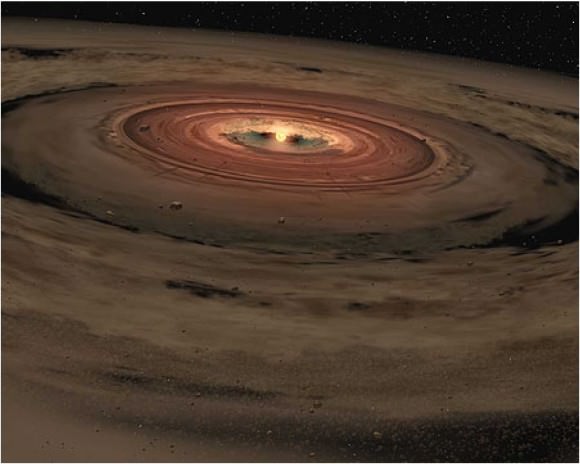 The Sun formed from the bulge at the center of this disk, and the planets formed further out. They inherited their rotation from the overall movement of the Solar System itself.
The Sun formed from the bulge at the center of this disk, and the planets formed further out. They inherited their rotation from the overall movement of the Solar System itself.
Over the course of a few hundred million years, all of the material in the Solar System gathered together into planets, asteroids, moons and comets. Then the powerful radiation and solar winds from the young Sun cleared out everything that was left over.
Without any unbalanced forces acting on them, the inertia of the Sun and the planets have kept them spinning for billions of years.
And they’ll continue to do so until they collide with some object, billions or even trillions of years in the future.
So are you still wondering, why does the Earth spin?
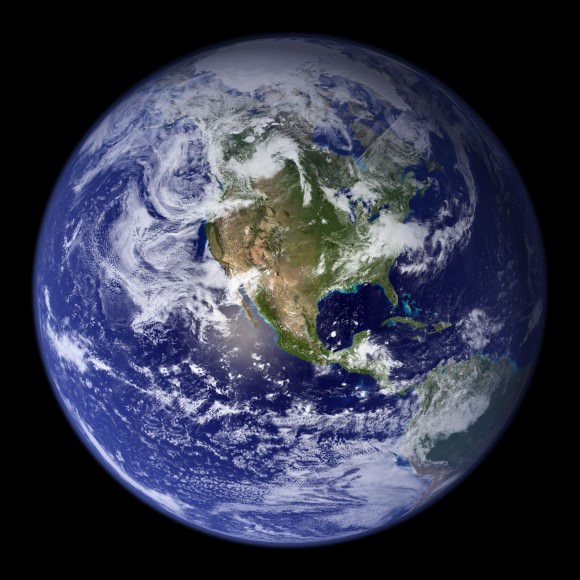 The Earth spins because it formed in the accretion disk of a cloud of hydrogen that collapsed down from mutual gravity and needed to conserve its angular momentum. It continues to spin because of inertia.
The Earth spins because it formed in the accretion disk of a cloud of hydrogen that collapsed down from mutual gravity and needed to conserve its angular momentum. It continues to spin because of inertia.
The reason it’s all the same direction is because they all formed together in the same Solar Nebula, billions of years ago.
Trying Out a New Commenting System
Hi everyone, I’m just performing a little experiment with Universe Today. We were previously using Disqus for comments on Universe Today, but I got a lot of concerns from readers.
So, I’m trying out a new system called Comments Evolved. This integrates comments from Google+, Facebook, Disqus and even WordPress if we want. I’m just enabling the Google+ version, because… everyone’s got a Google account.
If you want, I can enable the Facebook, Disqus and WordPress versions as well once I know this is working.
So why am I doing this? Why am I continuously making your life difficult with all this technology switcheroo?
Because managing comments on a public blog is like working at a SPAM factory. Behind the scenes here, we spend a MASSIVE amount of time killing SPAM, banning spambots, etc, etc. Not only do Nancy and I have to do it, but we actually have a few readers of Universe Today who we’ve deputized to help kill SPAM. And lots gets through.
In fact… we had turned off comments for posts older than 14 days because it was completely impossible to stay on top of the SPAM for all 15,000 articles within Universe Today.
So, in theory, by switching to this system… all the comments will have to go through Google’s SPAM filters first. You as users can identify comments as SPAM, and get them removed from the site, and teach Google how to do this better.
If it doesn’t work, we’ll just hack it out and go back to something else.
Feel free to drop me an email at [email protected] if you notice any bugs or have any further suggestions.
Check Out Some of the Best Space Writing on Google+: Brian Koberlein
Brian Koberlein is a professor at Rochester Institute of Technology. When he’s not teaching, though, he’s communicating science and education on Google+ of all places. Instead of doing a traditional blog, he’s posting article after article directly onto G+. He’s gathered a huge following on the social network, and a level of interaction that would make any blogger jealous.
Here’s an example of a post he did a couple of days ago on black hole thermodynamics.
And here’s one on detecting the atmospheres of extrasolar planets
Oh, Google+ now gives us the ability to embed posts onto our website, so I wanted to see what that looked like too. 🙂
Anyway, check out Brian’s writing, circle him on Google+, and watch his occasional appearances on the Weekly Space Hangout.
For anyone who’s considering a field as a science journalist, I highly recommend you follow in Brian’s footsteps. Don’t wait for someone to give you permission to write and communicate science. Just get writing. People will notice, and with a large enough readership and body of work, you can get a job anywhere.
The Curvature of the Universe
A while back we introduced you to Zogg the alien from Betelgeuse. Zogg has been busy helping aliens understand bizarre human concepts like “rituals” and “vision”, but he took a side journey to help everyone understand the geometry of the Universe. What does it mean to have a flat, finite Universe? How could you travel in one direction and return to your starting point?
The first episode was fantastic, and now serves as my favorite link to send people when they’re having trouble wrapping their head around the concept of a finite Universe. How the Universe can be expanding, without expanding into anything. Seriously, if you haven’t seen Part 1, stop and go watch it now.
True to his word, Zogg released this second episode, detailing the geometries of the Universe. What do cosmologists mean when they say the Universe is “curved” or “flat”. What could the curvature look like.
Watch it and enjoy. I can’t wait for Part 3.
How Did the Moon Form?
The night sky just wouldn’t feel right without the Moon. Where did our our friendly, familiar satellite come from?
Scientists and philosophers have been wondering about this for centuries.
Once Copernicus gave us our current model of the Solar System, with the Earth as just another planet and the Sun at the centre of the Solar System, this gave us a new way of looking at the Moon.
The first modern idea about the formation of the Moon was called the fission theory, and it came from George Darwin, the son of Charles Darwin.
He reasoned the Moon must have broken away from our planet, when the Earth was still a rapidly rotating ball of molten rock.
His theory lasted from the 1800s right up until the space age.
Another idea is that the Earth captured the Moon after its formation.
Usually, these kinds of gravitational interactions don’t go well.
Models predict that either the Moon would collide with the Earth, or get flung out into a different orbit.
It’s possible that the early Earth’s atmosphere was much larger and thicker, and acted like a brake, modifying the Moon’s trajectory into a stable orbit around the Earth.
Or the Earth and Moon formed together in their current positions as a binary object, with Earth taking most of the mass and the Moon forming from the leftovers.
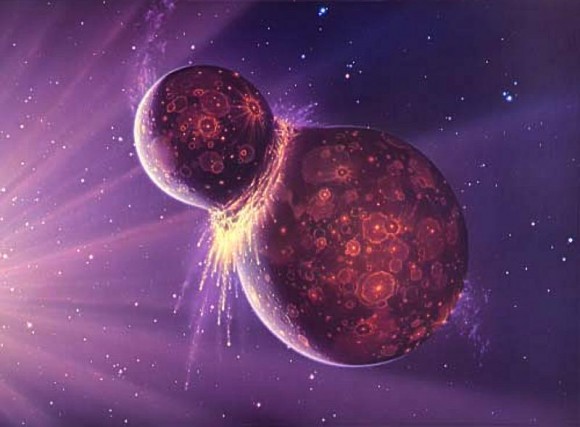
The most widely accepted theory is that the Moon was formed when a Mars-sized object slammed into the Earth, billions of years ago.
This collision turned the newly formed Earth into a molten ball of rock again, and ejected material into orbit.
Most of the material crashed back into the Earth, but some collected together from mutual gravity to form the Moon we have today.
This theory was first conceived in 1946 by Reginald Aldworth Daly from Harvard University. He challenged Darwin’s theory, calculating that just a piece of Earth breaking off couldn’t actually allow the Moon to get to its current position. He suggested an impact could do the trick though.
This idea wasn’t given much thought until a 1974 paper by Dr. William K. Hartmann and Dr. Donald R. Davis was published in the Journal Icarus. They suggested that the early Solar System was still filled with leftover moon-sized objects which were colliding with the planets.
The impact theory explained many of the challenges about the formation of the Moon. For example, one question was: why do the Earth and Moon have very different-sized cores.
After an impact from a Mars-sized planet, the lighter outer layers of the Earth would have been ejected into orbit and coalesced into the Moon, while the denser elements collected back together into the Earth.
It also helps explain how the Moon is on an inclined plane to the Earth. If the Earth and Moon formed together, they’d be perfectly lined up with the Sun.
But an impactor could come from any direction and carve out a moon. One surprising idea is that the impact actually created two moons for the Earth.
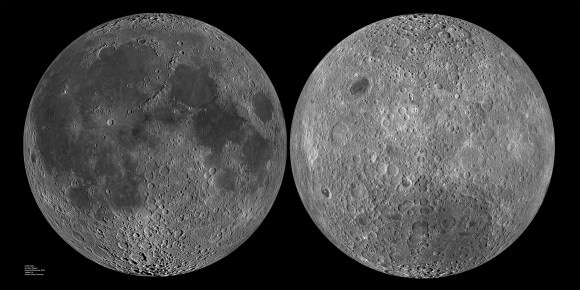
The second, smaller object would have been unstable and eventually slammed into the far side of the Moon, explaining why the surface on the far side of the Moon is so different from the near side.
Even though we don’t know for sure how the Moon formed, the giant impact theory holds the most promise, and you can bet that scientists are continuing to look for clues to tell us more.
Weekly Space Hangout – Sept. 6, 2013: LADEE Launch, Chris Kraft, Life From Mars, SpaceShipTwo and More
We missed a week, but now we’re back with the Weekly Space Hangout… back with a vengeance, with a full crew of 8 space journalists. We talked about the upcoming LADEE Launch, the test flight of SpaceShipTwo, an interview with Chris Kraft and much much more.
Host: Fraser Cain
Journalists: Alan Boyle, Amy Shira Teitel, Casey Dreier, Jason Major, Dr. Nicole Gugliucci, David Dickinson, and Eric Berger
LADEE Launch Set for Friday Night
Get Involved with LADEE
Chris Kraft on NASA
Did Life on Earth Come From Mars
Deep Impact… Dead?
Kepler Re-purposing Ideas
SpaceShipTwo Test
Europa Clipper Mission Update
M87 Jet Seen By Hubble
Black Hole Shuts Down Star Formation
We broadcast the Weekly Space Hangout as a live Google+ Hangout on Air every Friday at 12:00pm Pacific / 3:00pm Eastern. You can watch the show on Universe Today, or from the Cosmoquest Event when we post it.
How Could We Find Aliens? The Search for Extraterrestrial Intelligence (SETI)
In a previous video, I talked about the Fermi Paradox.
Our Universe is big, and it’s been around for a long time. So why don’t we see any evidence of aliens? If they are out there, why haven’t they contacted us, and how do we contact them? What methods might they use to try and contact us?
Where do we look for signs of alien civilizations?
The search for extraterrestrial intelligence, otherwise known as SETI, are the methods that scientists have proposed to discover evidence of aliens in the Universe.
Perhaps the most famous method is listening for their signals. Here on Earth, we have exploited the radio spectrum to send signals through the air. We even use it to communicate with spacecraft in the Solar System.
So, since it works so well for us, it makes sense that aliens might use radio waves to communicate from star to star. If there’s an alien civilization out there beaming a signal directly at the Sun, our largest radio telescopes should be able to pick up their signal.
The problem is that the galaxy is huge, with hundreds of billions of stars. Any one of which could be the world where the aliens live. Furthermore, we don’t know which frequency the aliens might use to communicate with us.
Even though the search for ET has been going for many years, we’ve only explored a fraction of the millions of available stars and frequencies on the radio spectrum.
So far, no definitive signal has been discovered.
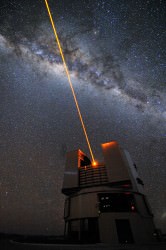
Again, so far nothing has turned up.
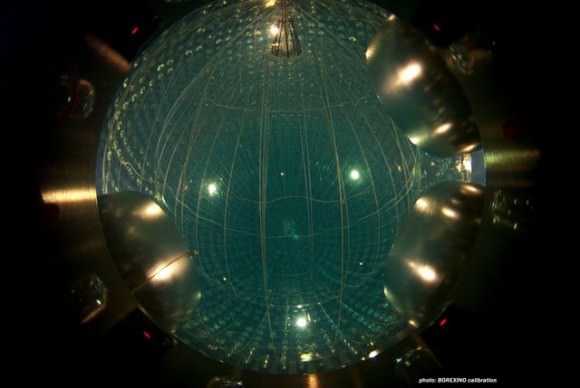
Neutrinos are generated in high energy collisions, and can pass right through planets with ease. They would be incredibly difficult to detect with our current technology, but maybe advances in the future will make that a possible communication method.
But maybe Instead of searching for signals, we could look for their artifacts.
If the energy of transmitting signals across the vast reaches of space is too much, it might make more sense for aliens to construct self-replicating probes and let them journey from star to star.
These probes could leave behind an obvious alien-made structure which we could discover once we become a true spacefaring species.
We could also detect aliens by their impact on their home planets. With a large enough space telescope, we should be able to study the atmosphere of planets orbiting nearby stars. An industrialized civilization would probably be polluting its atmosphere with various gases — just like we have — which would be detectable.
Finally, we could search for evidence of aliens through their structures.
If a civilization starts building megastructures which block off a large portion of their star’s light, we should be able to detect evidence through our search for extrasolar planets.

There have been a few attempts to reach out to other worlds directly, transmitting signals out into space. It’s unlikely that these signals will actually reach any other civilization, and some scientists are concerned about the wisdom of this kind of communication.
Do we really want to alert potentially hostile aliens to our location in the Milky Way?
It’s exciting to think that there are other alien civilizations around us in the Milky Way, and with a little more work, we could discover their location and maybe even communicate with them.
Let’s hope they’re peaceful.




